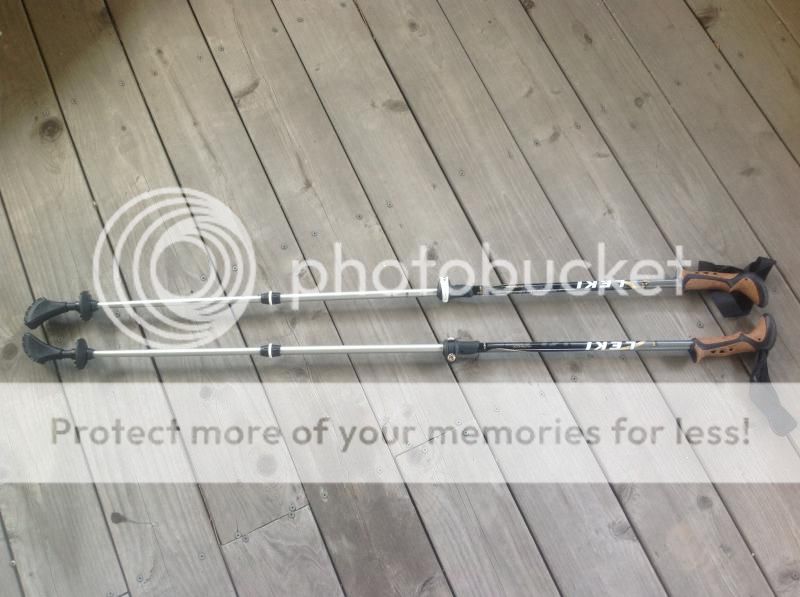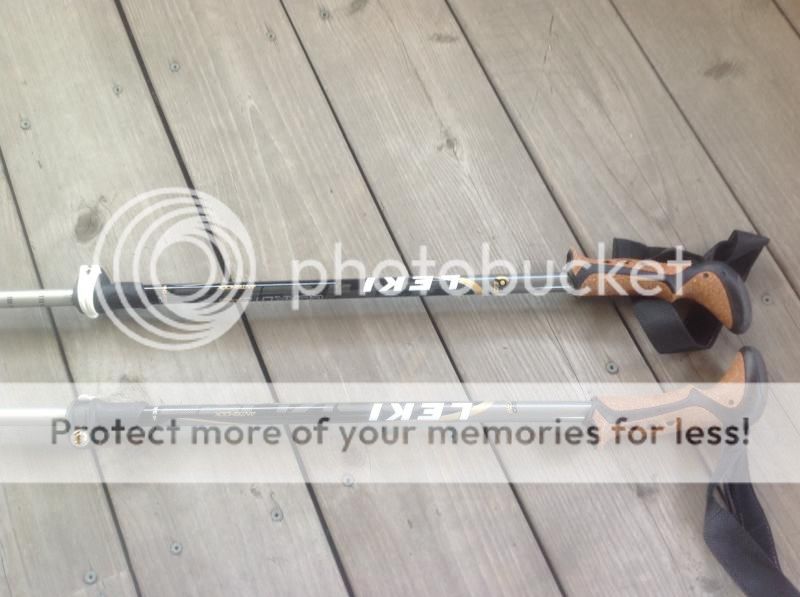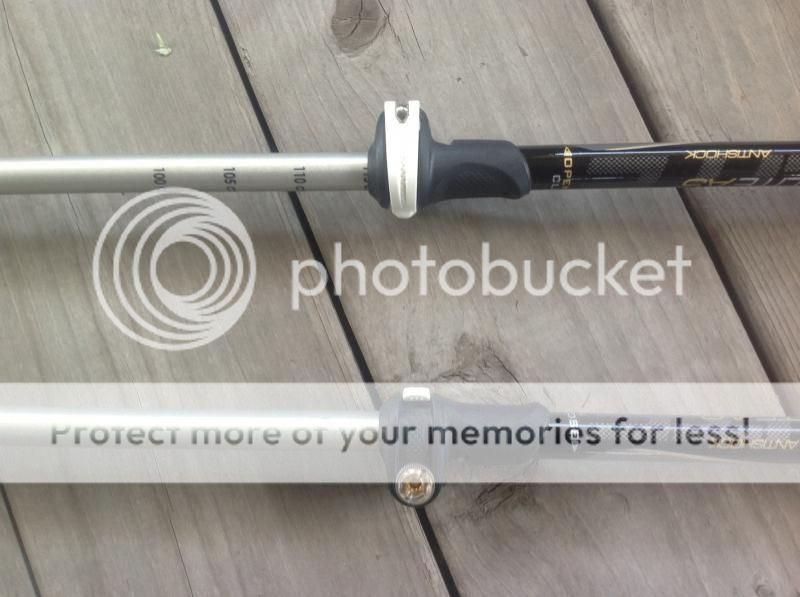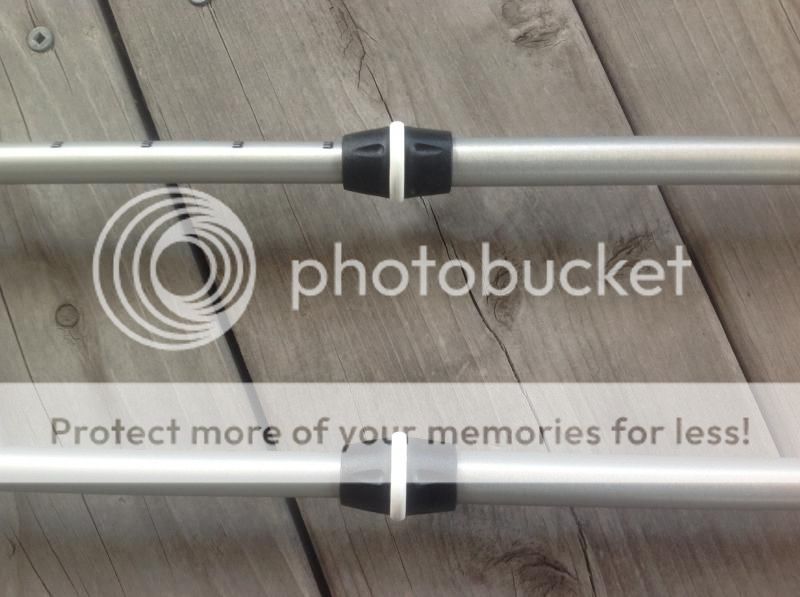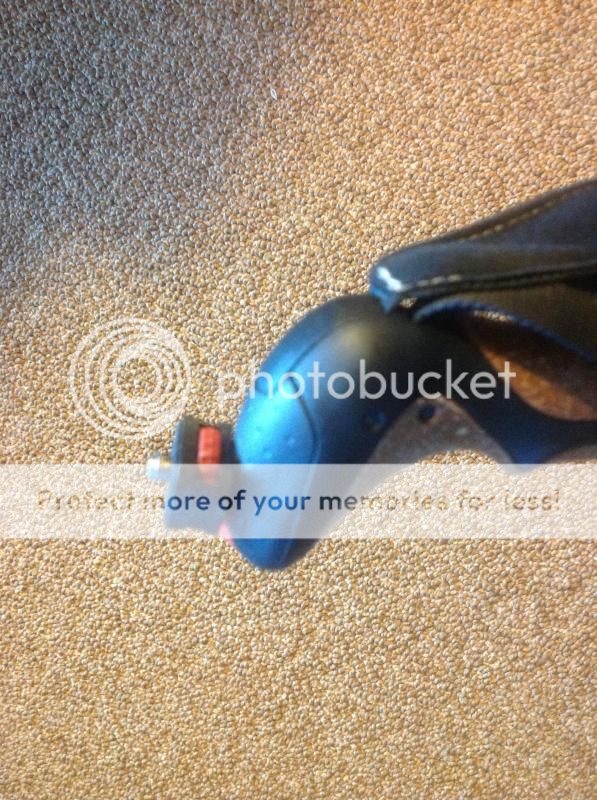I have been looking for lightweight yet relatively inexpensive poles. The Fisan Compact Superlight Trekking Poles look interesting and I've found several positive reviews. They are 3 part poles of 7001 grade aluminium with foam handles. Collapsed length is 24in (closer to 20in broken down) with a weight of 11 oz for the pair and cost around $90 USD.
Does anyone have any experience with these or a recommendation?
Thanks so much.
I know nothing of those poles but I'd make a couple comments.
For whatever it is worth, we own 3 sets of LEKI poles, all are the slightly higher priced Anti-Shock poles, average cost was just about $110 per set. Bought all from Amazon.com. I bought my poles first, then later my wife wanted poles, I purchased LEKI for her only because there would be "parts commonality" between the poles should we ever need replacement parts. That is the same reason my daughter uses LEKI poles, but I am not necessarily advocating that brand, it is what I am most familiar with. I will say that KOMPERDELL poles are also very nice poles. With both of those brands I know that I can get replacement parts pretty much anywhere in the world.
First off I would stay away from rubber or foam grips. They are not as comfortable in all the varied weather conditions as you might think, can become slippery, can freeze, etc. Look for CORK or CORK COMPOSITE grips.
Look for grips that have at least a slight angle to them, not straight vertical in line with the pole shaft. LEKI (my poles) claims that a 7-degree cant to the grip angle is ideal. I don't have a clue if that is true or not, but I will say, as someone with rheumatoid arthrits (diagnosed when I was 24) that at least a slight grip angle is a wonderful thing.
Look for grips with a large rounded top so you can "palm" them during decents, they give you stability.
Look for a 'quick adjust' strap that can be adjusted 'on the fly' so you will always maintain a proper grip. My poles have a 'camming' lock that flips up to loosen the strap and then snaps back down to lock the strap back into place. Some other brands have similar systems, some do NOT and are a pain in the neck to adjust. You will want the strap to be LONGER when you are walking up a long ascent, and then you will want to return it to its normal setting for reasonable flat walking.
Also, for walking on ROADS (asphalt, gravel, cobblestone, etc) you may want to consider anti-shock poles (various manufacturers use various methods) to absorb the shock of impact on the hard surfaces. A great blessing to people with wrist, arm or shoulder pain.
The TWIST style locks can be really cheap and not hold your weight, or they can be really good and when they are good they are stronger than the "FLIP" style locks. Here is one area where you pay for quality. FLIP locks are faster to use, a bit more convenient, but not as strong as the good TWIST locks. But a good FLIP lock will hold your body weight. Realize that you want your poles to be able to take your entire body weight without collapsing, they are there to help prevent falls, if they cannot take your body weight then they may actually cause you injury. My poles actually have BOTH styles. The shock absorber portion uses the TWIST lock and the other portion uses a FLIP lock.
Look for poles that are NUMBERED along the shaft. It is important that you fit your poles for walking on reasonably flat ground. You will want to lengthen them for long downhill descents. You will want to shorten them for long uphill ascents. So having some sort of numbering system on the shaft allows you to return your poles to their proper length for each type of terrain.
Here are mine, these are about 2 years old. You will notice they have rubber road tips on them, that prevents the "click click click" sound which can get annoying. Cheap rubber road caps will wear through in a few miles, look for 'vulcanized' rubber tips that slip over the carbide tip.
Here you can see the grips have a slight angle to them, according to LEKI they are canted forward 7 degrees. I never measured it, but I did try poles that had straight vertical grips and they were NOT as comfortable. There are now some on the market that have a radical cant to them, people say those are also very comfortable too.
Here you can see the FLIP style lock and on one of the poles you can also see part of the numbering system that is on the shaft that allows for quick reference to length so they can be adjusted quickly for UPHILL, DOWNHILL and reaonable LEVEL terrain.
This photo shows the TWIST LOCK mechanism, which is also where the ANTI-SHOCK system is located on my poles. This feature added a bit to the cost. While the LEKI brand uses an anti-shock shock absorber between the lower and the middle parts of the shaft, the KOMPERDELL system was (may still be) located just below the grip. Both systems work well.
One of my poles has an OPTIONAL camera mount added to the top. It is removed when walking. You leave this little adapter screwed into you camera's tripod hole and when you want to use the pole as a mono-pole to hold the camera steady you flip a little cap that is on the grip and you screw it into the grip. Here it is installed.
Here it is removed:
FINALLY, I am NOT advocating any particular brand. Clearly I have a brand that I have a few years of experince with, but I did look at KOMPERDELL as well, it also appears to have excellent designs. I think the key is to understand that if you are spending nearly $100 for a set of pole you should be looking for proper ergonomic design features that will help you walk.
Hope this helps.



